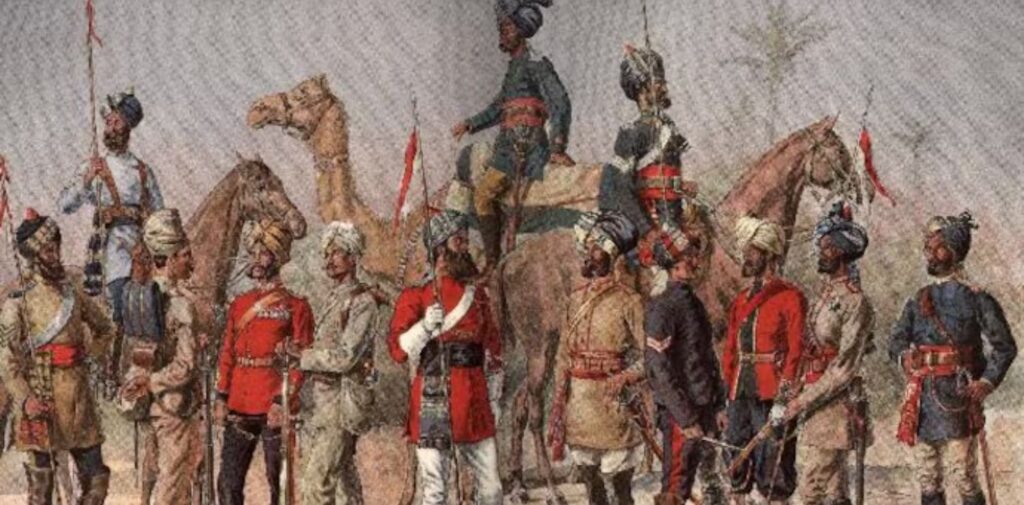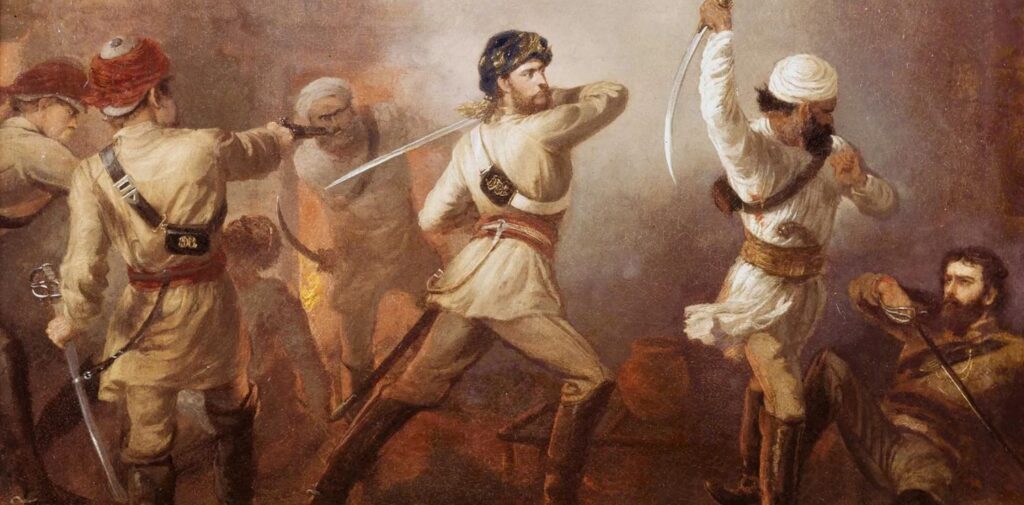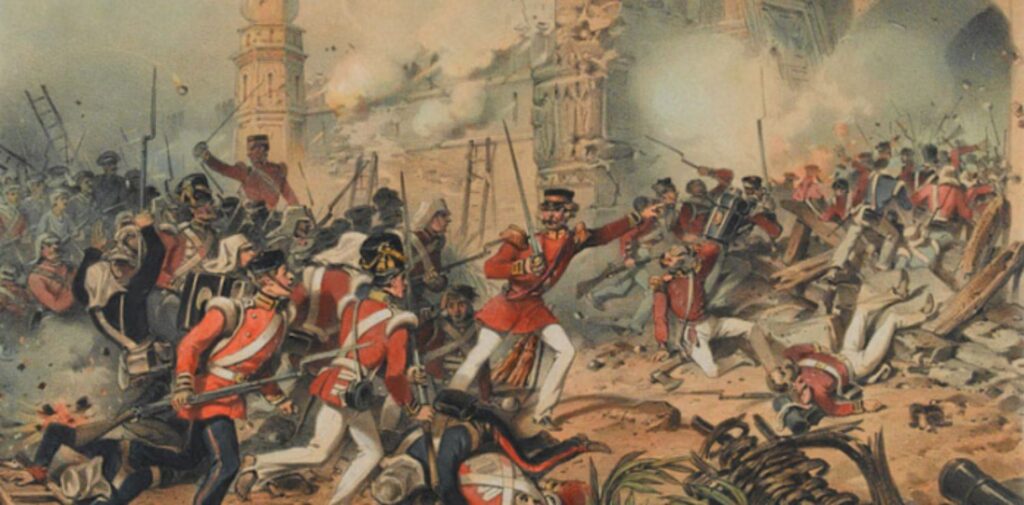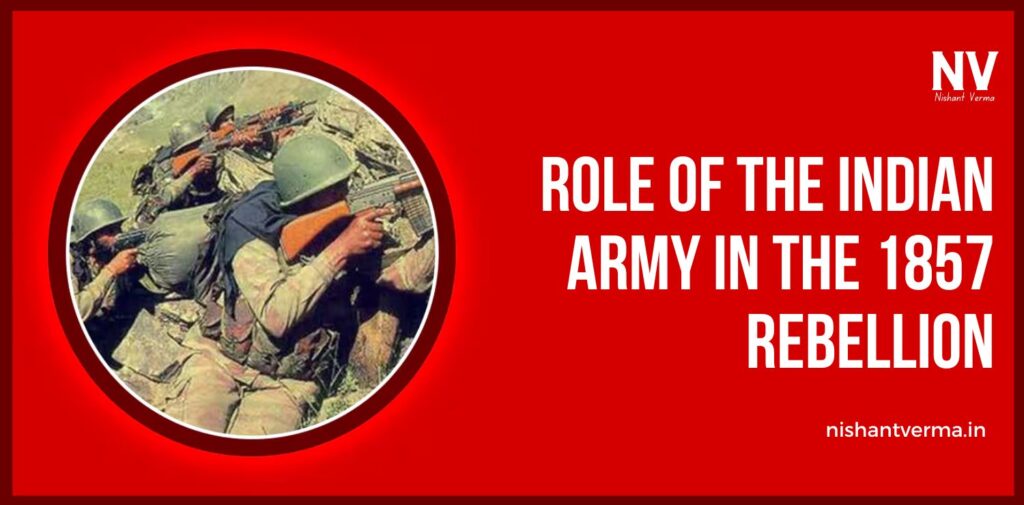The year 1857 marks a significant turning point in Indian history. Often referred to as the “First War of Indian Independence,” the 1857 rebellion (also known as the Sepoy Mutiny) was a widespread, though ultimately unsuccessful, uprising against British colonial rule in India. This rebellion involved a wide range of Indian soldiers, or sepoys, who were part of the British East India Company’s army, along with civilians, rulers, and various sections of Indian society.
One of the most crucial aspects of this revolt was the role played by the Indian Army, which, initially part of the British military apparatus, turned against its foreign masters in a powerful act of defiance. This article explores the role of the Indian Army in the 1857 rebellion, examining how it began, its impact on the rebellion’s course, and its long-lasting consequences.
The Indian Army Before 1857
Before the rebellion of 1857, the British East India Company had been steadily expanding its control over India for nearly a century. A large part of the British military force in India consisted of Indian soldiers, known as sepoys, who were recruited from different regions and communities across India. The British Army relied heavily on these sepoys for military operations, as they formed the backbone of the Company’s military.
Despite their crucial role, the sepoys were often poorly paid, treated with disrespect, and subjected to harsh discipline. Many sepoys came from rural backgrounds and were used to a way of life in their native regions, where they had a certain sense of honor and respect. However, under British rule, they were increasingly being asked to fight wars far from their homes, which caused growing resentment among the Indian soldiers.
Additionally, the British East India Company imposed several policies that were deeply unpopular among the sepoys, including new weaponry, taxes, and reforms that threatened their religious and social customs. These policies, particularly the introduction of the new Enfield rifle in 1856, played a significant role in sparking the rebellion of 1857.

The Spark of Rebellion: The Enfield Rifle and Religious Resentments
The immediate cause of the rebellion was the introduction of the Enfield rifle, which required sepoys to bite the cartridge before loading it into their guns. The cartridges were rumored to be greased with animal fat, specifically from cows and pigs, which offended both Hindu and Muslim sepoys. For Hindus, the cow is sacred, while Muslims consider pigs to be unclean. This violation of their religious practices deeply angered the soldiers, causing widespread discontent.
In addition to the cartridge issue, there were other factors that contributed to the rebellion. Many sepoys felt they were being exploited by the British, who had been reducing their pay and benefits. Moreover, the annexation of territories like Awadh (also known as Oudh) in 1856 angered many Indian rulers, who lost their kingdoms and control over their land. These events created an atmosphere of distrust and resentment, which ultimately led to the outbreak of the rebellion in May 1857.
The Beginning of the Rebellion: Meerut and Delhi
The first major spark of the rebellion occurred in the town of Meerut, located in present-day Uttar Pradesh, on May 10, 1857. It began when 85 sepoys in the British East India Company’s army refused to use the new Enfield cartridges. When they were punished for their disobedience, the sepoys in Meerut rose in revolt, freeing their fellow soldiers from prison, and marching toward Delhi to rally other troops.
The revolt quickly spread, and Delhi became the center of the rebellion. The Mughal Emperor Bahadur Shah Zafar, who had long been a figurehead ruler under British control, was declared the symbolic leader of the uprising by the rebellious sepoys. Although he had little real power, the choice of the emperor was an important symbol of resistance, as it connected the rebellion to the Mughal Empire’s legacy.
Delhi soon became a battleground, with Indian soldiers fighting British forces for control of the city. The sepoys and their civilian allies fought fiercely, but despite their determination and bravery, the British eventually recaptured Delhi in September 1857. However, the rebellion did not end there, and large parts of northern and central India continued to be affected by the uprising.

The Role of the Indian Army in the Rebellion
The Indian Army played a pivotal role in the rebellion, both as the initial instigators and as the force that carried the struggle to various parts of India. The sepoys, who were part of the British army, had access to military training, weapons, and a solid chain of command, which made them formidable opponents.
1. The Sepoys’ Rebellion: Mutiny and Resistance
As the rebellion spread across India, the sepoys were joined by a wide variety of other groups, including Indian civilians, nobles, and peasants. The sepoys, however, remained at the heart of the movement. They organized armed resistance against British forts, military stations, and outposts. Their knowledge of the terrain and their military expertise allowed them to successfully target key British strongholds.
In cities like Kanpur, Lucknow, and Jhansi, sepoys led the charge against the British, often collaborating with local rulers and civilians who shared a common desire for independence. The sepoys also had the support of many Indian civilians who saw the British as oppressive rulers. The rebellion began to take on a more political dimension, with leaders like Nana Sahib in Kanpur, Rani Lakshmi Bai in Jhansi, and Begum Hazrat Mahal in Lucknow emerging as key figures in the resistance.
2. The Role of Indian Officers
Indian officers in the British army also played an important role in the rebellion. Some officers, like Mangal Pandey, were directly involved in inciting mutinies. Mangal Pandey, a sepoy in the 34th Bengal Native Infantry, famously refused to use the new cartridges and attacked a British officer in March 1857, an act that is considered one of the earliest signs of rebellion. He was executed for his actions, but his martyrdom further fueled the anger of sepoys across India.
Other Indian officers, such as Bakht Khan, joined the rebel forces and provided military leadership. Bakht Khan was instrumental in organizing and leading rebel forces in Delhi after the sepoys seized the city. He was able to rally support and train the rebel forces, demonstrating the importance of Indian officers in the rebellion’s military organization.
3. The Contributions of Civilian Leaders
While the Indian Army’s contribution was crucial, the rebellion also saw the active involvement of local rulers and civilians. Figures like Rani Lakshmi Bai of Jhansi, Nana Sahib, and Tantia Tope led armed resistance movements in their respective regions. These leaders were able to gather large numbers of local soldiers and civilians to fight against the British, demonstrating the widespread desire for independence.
Rani Lakshmi Bai, in particular, became a symbol of resistance. She fought bravely against the British forces, leading her troops in battles and making several daring escapes. Her courage and leadership in Jhansi inspired many, and she remains one of the most iconic figures in India’s fight for independence.
The British Response
The British response to the rebellion was swift and brutal. Initially, the British were caught off guard by the scale of the mutiny, but they quickly regrouped and brought reinforcements from Britain. The British also employed divide-and-rule tactics, pitting different Indian communities against each other and seeking to isolate key rebel leaders.
By the middle of 1858, the British had managed to suppress the rebellion, recapturing key cities like Delhi, Kanpur, and Lucknow. The British also made significant changes to their administration in India, including the dissolution of the British East India Company and the establishment of direct British rule over India, known as the British Raj.

The Aftermath and Legacy
The rebellion of 1857 was ultimately unsuccessful, but it left an indelible mark on India’s history. Although the sepoys were defeated, the rebellion marked the beginning of a larger struggle for Indian independence, which would culminate in 1947. The 1857 uprising inspired generations of Indians to rise against British rule, and it was seen as a precursor to the Indian freedom movement that would gain momentum in the 20th century.
The role of the Indian Army in the rebellion demonstrated the importance of the military in shaping the course of India’s independence. The sepoys and Indian officers played a crucial role in resisting British rule, and their actions were a testament to the courage and determination of India’s people in their fight for freedom.
Conclusion
The 1857 rebellion is often regarded as the first significant act of resistance against British colonial rule in India. The Indian Army, through the actions of sepoys, officers, and local leaders, was at the heart of this uprising. The bravery and sacrifice of these soldiers marked the beginning of a long and painful struggle for independence, which would eventually lead to the creation of an independent India in 1947. While the rebellion was suppressed, it paved the way for future movements and inspired generations of Indians to continue their fight for freedom.




